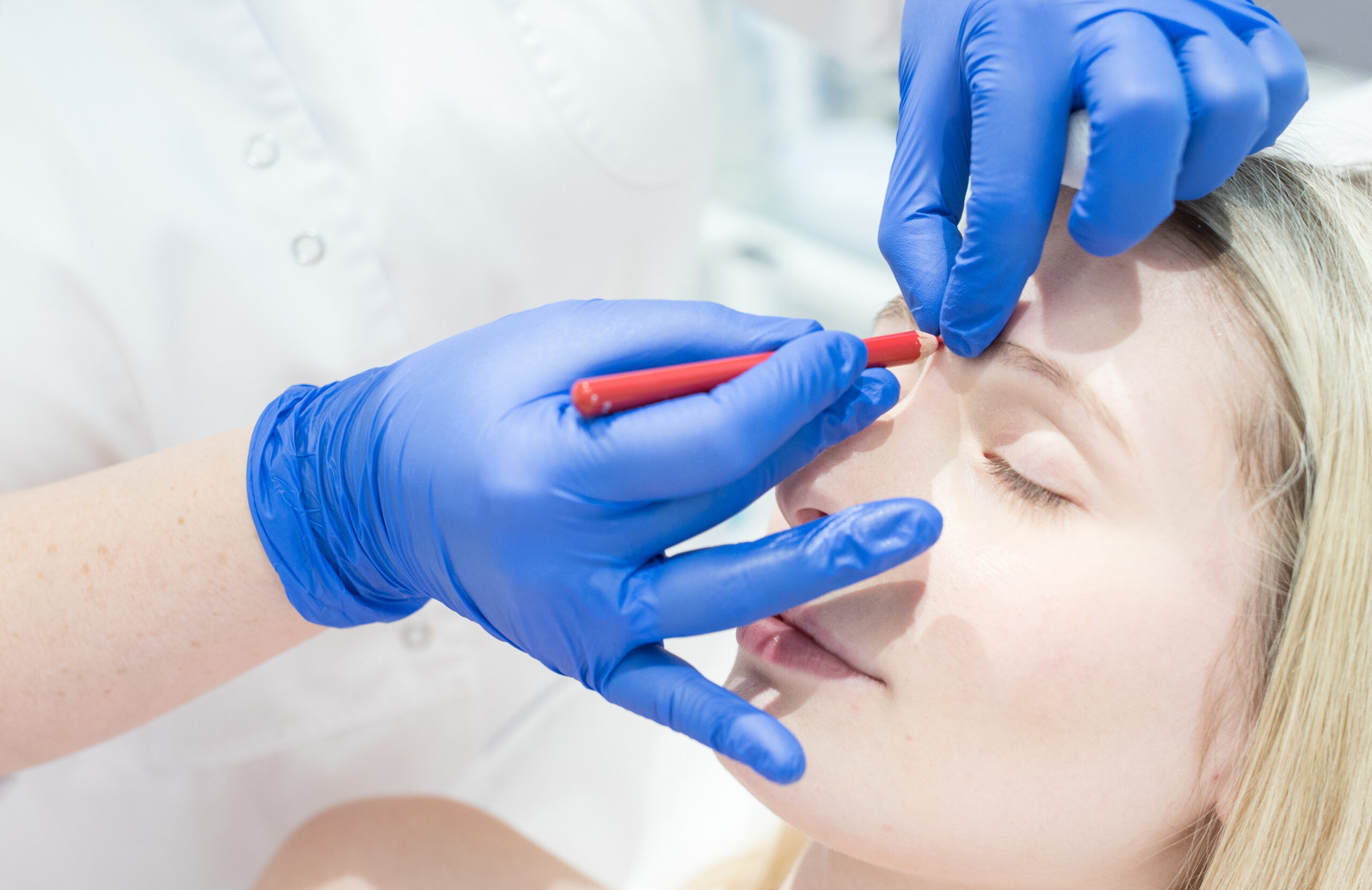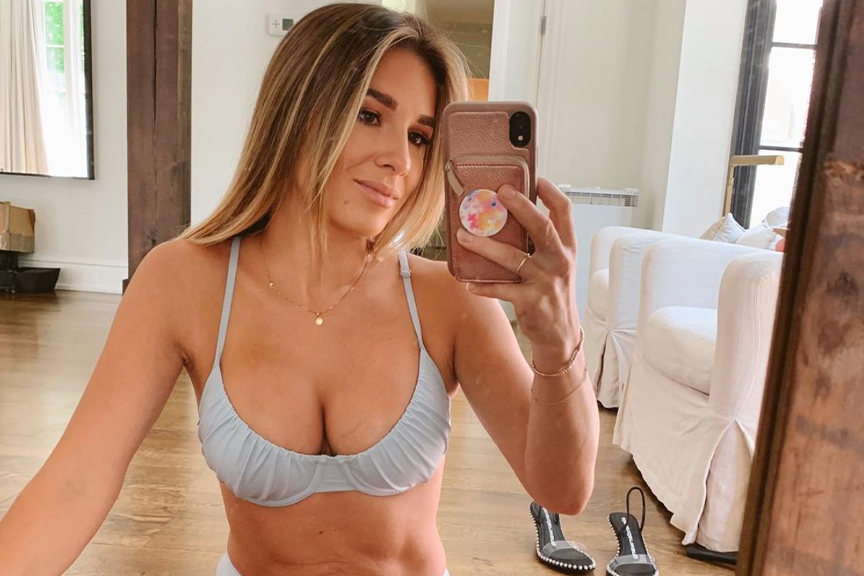From dissatisfaction with results to necessary re-dos, the demand for a second, third or fourth chance at the best outcome continues to grow.
Sometimes it takes a little persistence to achieve bliss. And if art imitates life, Michelangelo’s famous Mary (La Pietà) required 20 “revisions” to fix a droopy eyelid, injured during a tragic 1972 assault. In surgical terms, a revision is defined as the second (or third, or fourth) round of the same surgery. “Never would I have imagined that I would need four extra breast surgeries,” says Gwen Roman, a 48-year-old mother from South Florida. “If I could’ve gone back in time, I would have not just talked to doctors and flipped through their pictures, but I would have talked to patients who had undergone a similar ordeal.”
Four years ago, Roman was diagnosed with stage-zero ductile carcinoma. After a complicated lumpectomy, her breast surgeon recommended a double mastectomy, which he performed alongside a plastic surgeon, who inserted Roman’s implants. “While I looked awful, I had just cheated cancer, and it made clear to me that a revision surgery would be required in six to eight months,” she says. But after the first revision, Roman was aghast and saw little improvement. “My breasts were still uneven and saggy, and my nipples weren’t in the right place.” Six months later, Roman returned to the same surgeon for a second revision. “When I voiced my concerns, he seemed to brush them off. When I asked him to center my nipples, he said it was not possible.”
Roman was even more crestfallen after the results from her second revision. “Not only did I have these scars near my armpit, but he had done some liposuction on my stomach and left me with a concave swoop above my belly button.” While her plastic surgeon offered to perform a third revision, Roman had had enough. She spoke to friends who had undergone similar experiences, and then interviewed doctors based on their referrals.
Finally, Roman felt confident about her decision to entrust West Palm Beach, FL plastic surgeon Luis A. Viñas, MD with her next surgery. “Dr. Viñas took the time to understand what bothered me.” He suggested two more revision surgeries, during which he lifted Roman’s breasts and centered her nipples, a feat her initial plastic surgeon said was impossible. “A part of my practice is fixing surgeries from other surgeons. You have to be willing to listen to your patients. There is always something you can do,” says Dr. Viñas. “My goal is to make the breasts look as they once did, or even better.” He also replaced Roman’s teardrop implants with round ones. “They looked so much better. I was finally happy,” says Roman.

efenzi / Getty Images | Image Used for Illustrative Purposes Only
SIZE DOES MATTER
While revision statistics are scant, the FDA estimates that 40 to 56 percent of all breast revision surgeries relate to a change in implant size. Implants, which are labeled as medical devices, do not last forever, and there is always the possibility of capsular contraction, infection, wrinkling or rupture. “I see higher revision rates with patients who have a combination procedure, such as breast implants with a breast lift,” says New York plastic surgeon Stephen Greenberg, MD. “It has to do with the way the breast, skin and implants relate to each other.” Dr. Greenberg finds the increase of medical tourism cases gone wrong to be alarming. “I’ve treated a number of patients who have returned from having plastic surgery in countries like Costa Rica or the Dominican Republic. Sadly, some return home with problems, and even life-threatening infections, which require hospitalization and corrective surgery.” Huntington Beach, CA plastic surgeon Andrew Smith, MD advises all patients to make sure their doctor is board-certified and has extensive experience with reconstruction procedures. Dr. Smith, who performs his fair share of revision procedures, says the most common tummy tuck complaints are when the scar ends up too high or the belly button looks fake. “If the tissue has loosened over time, it is an easier fix, but if the tissue or skin is too tight, it becomes more difficult.”
FACE FACTS
Perhaps one of the more challenging revisions of all is the rhinoplasty. A 2016 study published in the Journal of the American Medical Association estimates that between 5 to 15 percent of all nose jobs are revised. “I always take the time to counsel my patients and let them know that this is not a surgery for perfection, but rather improvement,” says New York facial plastic surgeon Alexander Ovchinsky, MD. He says that in some cases, minor imperfections can be improved with fillers, steroid injections or the shaving of a cartilaginous irregularity. Other times, a revision is a medical necessity. “It is not uncommon for the nose to be made smaller during a rhinoplasty surgery; sometimes, the narrowing of the airway interferes with normal breathing.”
Compromised functionality can occur immediately or over a long period of time, says Boston facial plastic surgeon Jaimie DeRosa, MD, who adds that our noses continue to change throughout our lifetime. Donna L. (name changed) from Rhode Island knows that all too well. She had two conservative rhinoplasties in her teens, but at age 20, was finding it increasingly difficult to breathe through her left nostril.
“I returned to the same surgeon to remove the excess scar tissue. As he was putting me under, I asked him to revise the tip a little more. This was a mistake I will forever regret,” says Donna. “He took too much off and ‘Michael Jackson-ed’ me.” After 20 years of living with her Thriller nose job, she decided it was time to interview top surgeons in the Northeast. A few refused to operate on her, but Dr. DeRosa was up for the challenge.
“She took precise measurements, modeled the nose and described a strategy in layperson’s terms,” says Donna. “She felt different than any other surgeon I had consulted with. I’ve repeatedly thanked her for changing my life. My nose looks normal. Finally.”
Dr. DeRosa says not all patients who are potential candidates choose revision. “It’s a big decision. Every time you operate on the nose, you weaken it,” she says. But, she is comforted that a majority of her patients come in with realistic expectations. Ten years ago, she says, that was not the case. Patients wanted Angelina Jolie’s nose, but in most cases, they lacked her cheekbones, eyes and lips. “Today, patients are self-imaging on photo-editing apps. They’re getting real-time information on how their nose might look after surgery.” Dr. DeRosa says apps cannot replace a surgeon’s own imaging, which takes into account aspect ratios and nasal skin thickness.
Unlike rhinoplasties, facelifts rarely require revision. “Time and the progression of the aging process are the most common reasons for a revision,” says Charlotte, NC facial plastic surgeon Joshua Surowitz, MD. His partner, facial plastic surgeon Andrea Garcia, MD, adds that occasionally patients with heavier faces may require a minor touch-up a year after their initial surgery.”
The decision to undergo a revision is not one that should be taken lightly. But, at least in dexterous hands, a rough beginning can be chiseled into a work of art that even Michelangelo would approve. It just might take more than one try.
REVISIONS 101
WHAT IT IS: Revision defines the second, third or fourth round of the same procedure to make a correction or adjustment.
WHY IT’S DONE: For aesthetic reasons, loss of functionality, unexpected scarring, or even complications such as a hematoma or infection
COMMON REVISION PROCEDURES: Abdominoplasty, blepharoplasty, breast surgery, browlift, facelift, liposuction and rhinoplasty
POSSIBLE RISKS: Eugene, OR plastic surgeon Mark Jewell, MD says all revision surgeries carry their own set of risks. He notes breast reconstruction surgery can be problematic because of tissue loss, scarring and the effect of radiation, which if used, can compromise the outcome. Revision rhinoplasty is the most problematic, he explains, as there are many variable factors, “including structural elements and skin thickness, and how it drapes over the reshaped nose.”
CAVEAT EMPTOR
Before the knife, there’s the pen. Here’s what to expect before you sign.
1. Consent forms list the known minor and more serious complications. This list is not meant to scare you before a procedure, but rather to make you a more educated patient and consumer.
2. Complications can and do happen, but a capable, board-certified surgeon who specializes in your procedure should be trained to recognize them and address them during or after surgery.
3. Discuss the revision clause. If a revision surgery is needed, medical malpractice attorney Trisha S. Widowfield says a patient may still be responsible for some associated surgical fees.
4. Manage expectations. ”Patients need clear expectations to determine what results the surgeon can assure and what the potential variations can be,” says Widowfield.
5. Don’t go AWOL. Comply with your surgeon’s postoperative instructions, schedule and show up for follow-up appointments, and notify your surgeon of any new or unusual concerns that may arise.

















